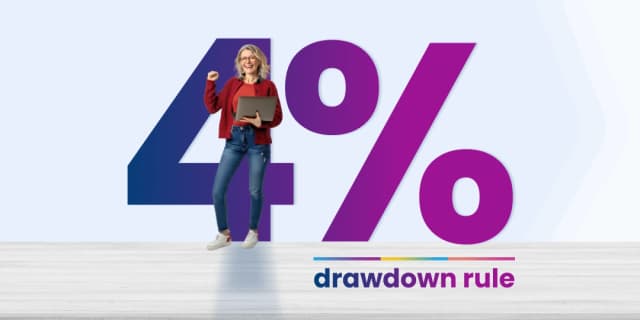Retirement 101: How to retire on your own terms
Simon Brown
18 September 2025
If you want to make the most of your retirement savings, it starts with understanding how time, fees, and investment choices work together to shape your financial future. Many South Africans miss out on growth by starting too late, paying too much in fees, or moving too cautiously when nearing retirement. The good news is that with a few smart adjustments, such as managing costs, preserving your funds when changing jobs, and choosing the right mix of annuities, you can turn your savings into a strategy that supports the life you want, for as long as you need it.
You’ll walk away knowing:
- How to use time and compounding to your advantage (even if you’re starting later).
- What a complete fee picture looks like (and how to ask for it).
- Which benchmarks and horizons to use when judging performance.
- The right way to preserve retirement money when changing jobs.
- How to choose between (or blend) a living annuity and a life annuity.
- What the Two-Pot System changes, and what stays the same.
A beginner-friendly guide to understanding retirement planning, tax benefits, and investment strategies
Skip to the relevant parts:
- 00:05 – Welcome and overview of the Retirement 101 webcast.
- 01:27 – Why starting early gives time the power to grow your money.
- 02:08 – Only 6% retire independently - why planning matters.
- 03:01 – Understanding Reg 28 and the real tax benefits of RAs.
- 04:02 – How RA tax deductions and rollover limits actually work.
- 06:00 – The one fee number that matters: your EAC.
- 08:00 – How to measure long-term returns the right way.
- 11:12 – The danger of de-risking too soon before retirement.
- 13:37 – Changing jobs? Why you should preserve, not cash out.
- 24:03 – Life vs Living Annuities - finding the mix that fits you.
Why retirement planning can’t wait
The earlier you start, the easier it is for small, consistent contributions to grow meaningfully over time. If you’re beginning later in life, you can still catch up by focusing on higher contribution rates, smarter asset allocation, and lowering your investment costs.
Making time your best friend
Compounding is one of the most powerful forces in investing. Every extra year your money remains invested helps it grow exponentially. Even small early contributions can outpace large late ones. The secret is consistency, not perfection.
Understanding Regulation 28
Regulation 28 sets limits on how your retirement funds can be invested across different asset classes. While it restricts excessive offshore or equity exposure, it’s designed to balance growth and protection, ensuring diversification without capping your potential.
The tax breaks that power retirement saving
Contributions to retirement annuities, pension, or provident funds are tax-deductible up to 27.5% of income (capped at R350,000 per year). You can also carry forward excess contributions to future tax years, helping you reduce tax and grow savings faster.
The only fee number that matters
Fees compound just like returns, only in reverse. Always ask your provider for the Effective Annual Cost (EAC), which includes all layers of cost, including management, administration, advice, and extras. Once you know your total fee, you can judge whether you’re getting value.
Compare your retirement investments
Effective annual cost calculatorHow to measure performance properly
Short-term returns can be misleading. Judge retirement portfolios over five to ten years or more, comparing performance to peers and benchmarks that share similar equity exposure. What matters most is the net return, which is what’s left after all fees are deducted.
Avoiding the de-risking trap
Many people approaching retirement switch too heavily into cash or bonds. While this feels safer, it can stifle the growth needed to sustain a 20 to 30-year retirement. The smarter approach is to gradually taper risk, maintaining some equity exposure to outpace inflation.
Changing jobs? Preserve, don’t cash out
When you change employers, resist the temptation to withdraw your pension or provident fund. Transferring it into a preservation fund keeps your savings growing tax-free, and you’ll still have the option to make one emergency withdrawal if truly needed.
See your pension savings grow with our
Preservation Fund calculatorMoving your retirement fund
You can transfer a retirement annuity or preservation fund to another provider without triggering tax. This allows you to reduce costs or improve performance. Start by requesting your EAC, then compare providers before deciding.
Your annual financial “health check”
At least once a year, review your total fees, asset mix, and progress toward your target retirement amount. A short 30-minute review can help you identify underperforming funds early and ensure you’re still on track to meet your goals.
Choosing your income in retirement
When you retire, you’ll decide how to turn your savings into income.
- Life annuity: Guarantees an income for life, with options to include inflation protection and benefits for your spouse.
- Living annuity: Offers flexibility to adjust your income (2.5%–17.5%), invest offshore, and leave the balance to your heirs.
Many retirees blend both, securing a stable base income while keeping part of their portfolio invested for growth.
Keeping drawdowns sustainable
Drawing down too much too early can deplete your capital. A 4 to 5% annual withdrawal rate is widely viewed as sustainable. Revisit this percentage each year as your needs, returns, and inflation change.
Investing offshore in retirement
Living annuities aren’t restricted by Regulation 28, meaning you can adjust your offshore exposure freely. This allows retirees to hedge against local currency risk and tap into global growth opportunities.
Understanding the Two-Pot System
From 1 September 2024, new contributions are split: one-third into a savings pot (accessible annually) and two-thirds into a retirement pot (locked in until retirement). Any withdrawals from the savings portion are taxed at your marginal rate, but both pots remain invested.
Prefer a guided chat?
Book a quick call with a consultant. We’ll help you decode fees, benchmark your performance, and map an income plan that fits your goals.
Related articles
How can we 10X Your Future?
Begin your journey to a secure future with 10X Investments. Explore our range of retirement products designed to help you grow your wealth and achieve financial success.


